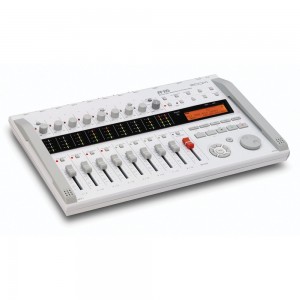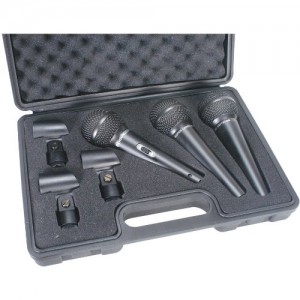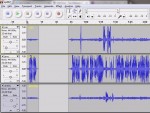We’ve been asked in the past how we record our podcast, and since we just upgraded to some new equipment in 2013, we thought we would pass along some of the details to any prospective podcasters out there. Early on we used Skype to record most of episodes, with occasional recordings on location. But late in 2012 we decided to start recording all of our episodes at a bar, which poses some unique audio engineering challenges.
 Because we have three hosts and quite often have a guest or two join us for an episode, we needed more than just one microphone and we needed the ability to mix all of those channels together. Although not inexpensive, the Zoom R16 has turned out to be a great solution. It is capable of recording up to 8 tracks simultaneously, and the sound quality of the recordings is excellent. It’s probably overkill for the average podcaster, but it suits us well. We have the flexibility to record from many inputs, but the unit is still small enough that it can easily be taken on location, runs on six AA batteries (which last several hours), and doesn’t take up our entire table. It should be noted that you will get several hours out of the batteries assuming you are using dynamic microphones. The R16 is capable of providing phantom power for condenser mics, but a single Samson C01 will drain fresh batteries in about an hour, so keep that in mind.
Because we have three hosts and quite often have a guest or two join us for an episode, we needed more than just one microphone and we needed the ability to mix all of those channels together. Although not inexpensive, the Zoom R16 has turned out to be a great solution. It is capable of recording up to 8 tracks simultaneously, and the sound quality of the recordings is excellent. It’s probably overkill for the average podcaster, but it suits us well. We have the flexibility to record from many inputs, but the unit is still small enough that it can easily be taken on location, runs on six AA batteries (which last several hours), and doesn’t take up our entire table. It should be noted that you will get several hours out of the batteries assuming you are using dynamic microphones. The R16 is capable of providing phantom power for condenser mics, but a single Samson C01 will drain fresh batteries in about an hour, so keep that in mind.
 You can spend a lot of money on microphones, and if you have the budget, generally speaking, the more you spend the better. But if you want high quality for a reasonable price, you can’t go wrong with the the Zoom H2n, which is what we started off using for our on location episodes. The sound quality is remarkably good for such a small unit, however, it doesn’t do as well in environments with a lot of background noise. Some of our listeners complained that it was hard to separate our individual voices from the ambient noise, which is what prompted us to upgrade to the R16 above. But that meant we needed individual microphones, and the best bang for your buck seems to be this three-microphone set from Behringer (we bought two sets, along with XLR cables). We have been very pleased with the results.
You can spend a lot of money on microphones, and if you have the budget, generally speaking, the more you spend the better. But if you want high quality for a reasonable price, you can’t go wrong with the the Zoom H2n, which is what we started off using for our on location episodes. The sound quality is remarkably good for such a small unit, however, it doesn’t do as well in environments with a lot of background noise. Some of our listeners complained that it was hard to separate our individual voices from the ambient noise, which is what prompted us to upgrade to the R16 above. But that meant we needed individual microphones, and the best bang for your buck seems to be this three-microphone set from Behringer (we bought two sets, along with XLR cables). We have been very pleased with the results.
 When it comes time to edit and mix down the audio, the obvious choice is Audacity. You can spend hundreds of dollars on software that has more features, but why? Audacity has always had a somewhat clunky user interface, but once you spend a few hours getting used to it, it’s not bad, and for free software, it is extremely powerful, and will certainly satisfy the needs of virtually any podcaster. The R16 plugs in via USB (and can also be used as an audio interface, if needed), and is recognized as a drive, which makes copying the audio files over to your PC a snap, with each track saved as a separate WAV file. You simply drag and drop the files into Audacity and you are ready to edit.
When it comes time to edit and mix down the audio, the obvious choice is Audacity. You can spend hundreds of dollars on software that has more features, but why? Audacity has always had a somewhat clunky user interface, but once you spend a few hours getting used to it, it’s not bad, and for free software, it is extremely powerful, and will certainly satisfy the needs of virtually any podcaster. The R16 plugs in via USB (and can also be used as an audio interface, if needed), and is recognized as a drive, which makes copying the audio files over to your PC a snap, with each track saved as a separate WAV file. You simply drag and drop the files into Audacity and you are ready to edit.
That’s about it. If you have any other questions about how we record, we’d love to hear from you. Feel free to leave us a comment below.